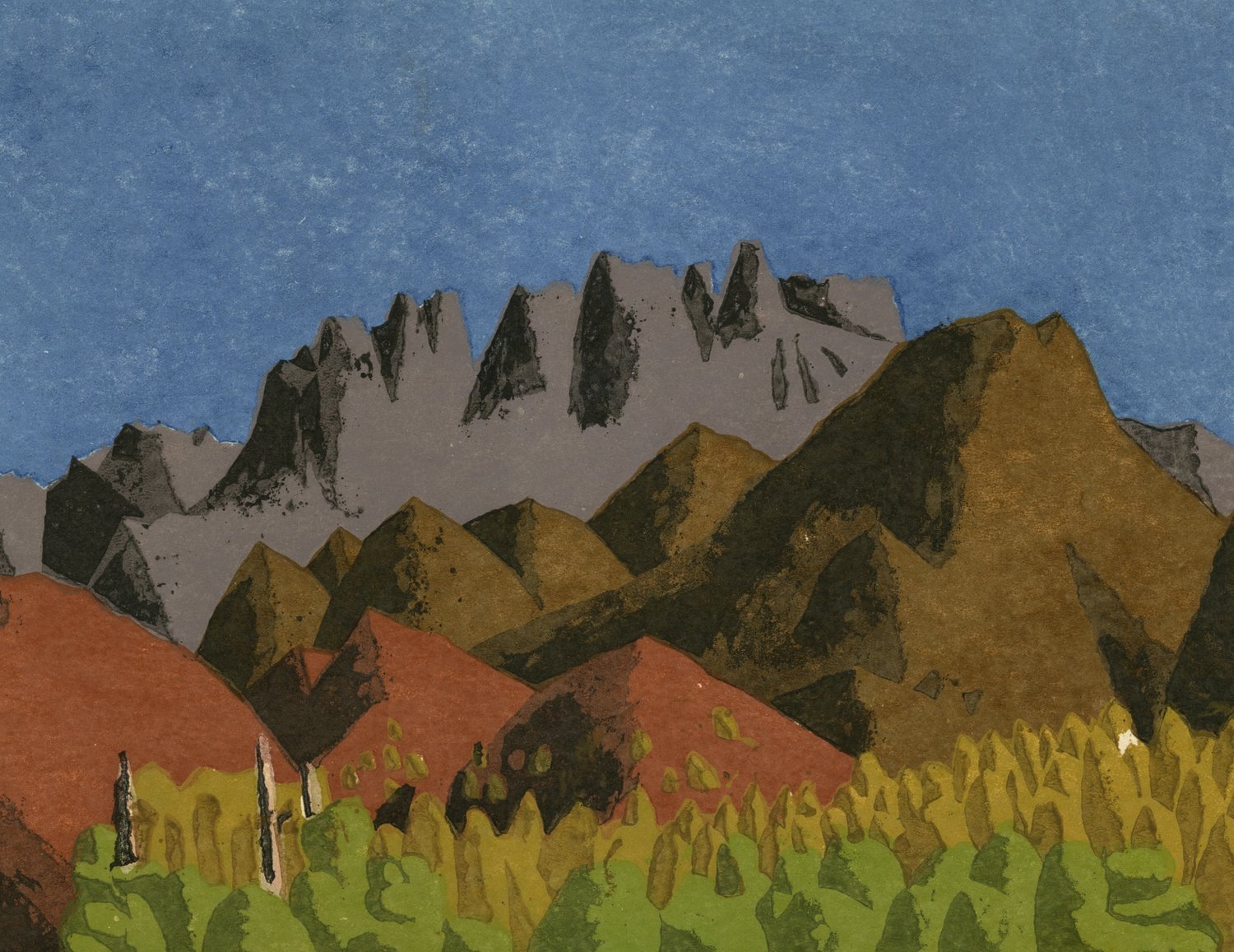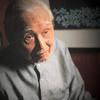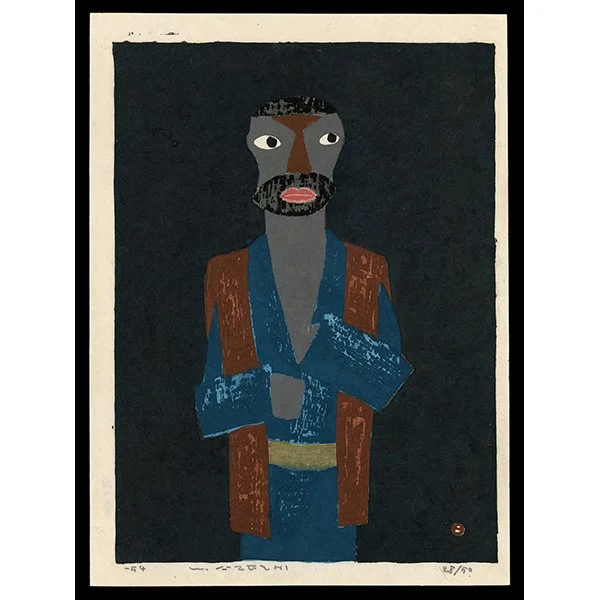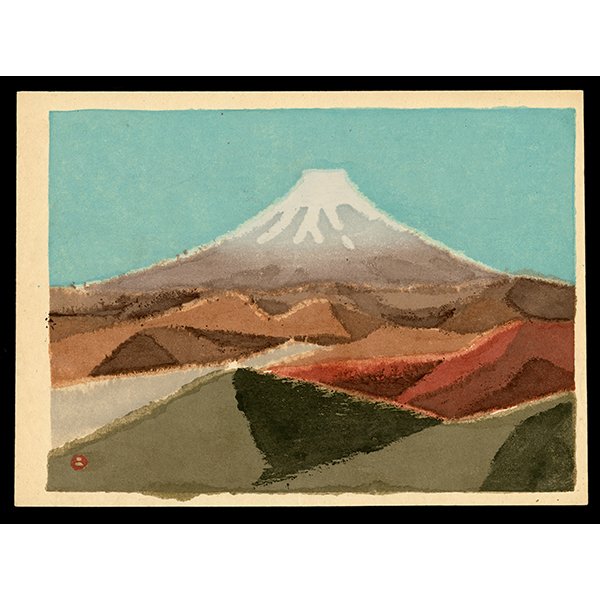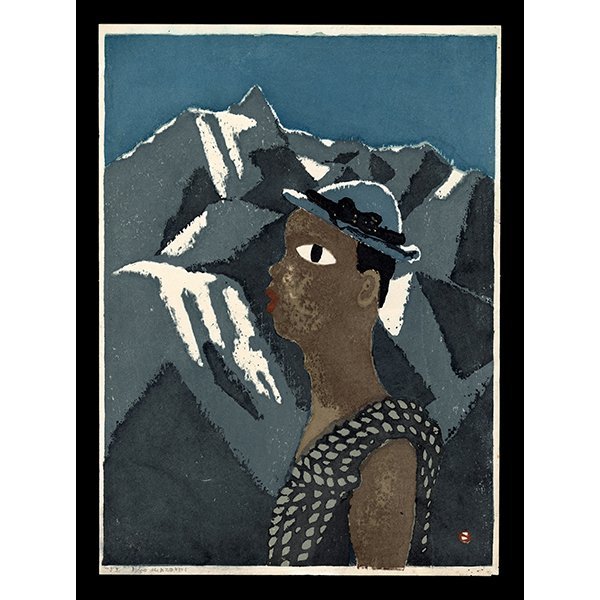AZECHI
COLLECTING JAPANESE PRINTS FEATURED SOSAKU HANGA ARTISTUmetaro Azechi
1902 - 1999
Profile at a Glance:
Sosaku Hanga artist
Part of Onchi’s circle—worked as Onchi’s artisan printer
Early woodblock prints featured cityscapes
Most well-known for his print designs featuring mountains landscapes and mountaineers
Known as "Yama no Hangaka," or "Printmaker of Mountains," Azechi, Umetaro was a sosaku hanga artist born in 1902 in Itajima Village (present-day Uwajima City), Ehime Prefecture. Although Azechi aspired to become a Western-style oil painter, his impoverished family was unable to afford him an education beyond elementary school. Thus, he worked as a merchant seaman for several years, eventually scraping enough money to afford basic correspondence lessons in Western art from a school in Tokyo.
At the age of nineteen, Azechi moved to metropolitan Tokyo, where he worked as a paperboy for the Mainichi newspaper. Unfortunately, after the Great Kanto Earthquake of 1923, he was forced to evacuate the mainland and return to his rural hometown. Azechi returned to Tokyo two years later and gained employment at a government printing office, experimenting with the plant's engraving equipment in his spare time. Over the next four years, he continued to study art until a fateful meeting with sosaku hanga artist Hiratsuka Un'ichi in 1926. Hiratsuka, one of the central figures of the sosaku hanga movement, took Azechi under his wing and urged him to exhibit with the Nihon Sosaku Hanga Kyokai organization, which he did the following year.
With a small flurry of success, the young artist decided to give up oil painting and pursue hanga, or printmaking. His early prints from the 1920s and 1930s were strongly influenced by Hiratsuka, including numerous cityscapes and print series such as Ten Scenes of Iyo (1936). Through Azechi's association with Hiratsuka, he also came into the orbit of artists Onchi Koshiro and Maekawa Senpan (for whom he worked as an artisan printer).
With newly-established contacts and creative inspiration from Onchi, Azechi went on to exhibit works with Shun'yokai in 1928, and Kokugakai in 1931. He became a member of the Nihon Hanga Kyokai the following year and joined Kokugakai in 1943. The year after, Azechi joined the National Painting Society. He further contributed to a variety of publications and print series, including Ichimokushu, Recollections of Tokyo, Kitsutsuki, Kitsutsuki Hanga-shu, One Hundred Views of New Tokyo, Hosun hanga, Jissen Hanga, and Han. As he grew in size and stature, Azechi was also represented in the Sao Paulo (1953), Lugano (1956), and Tokyo International Biennales. During the postwar period, he developed a highly individualistic style of prints featuring mountains and mountaineers, for which he is most well known.
At the peak of his success, Azechi became an honorary member of the Japan Print Association in 1976 and an honorary member of Machida city two decades later. An avid mountain climber and enthusiast, Azechi Umetaro passed away in 1999.


